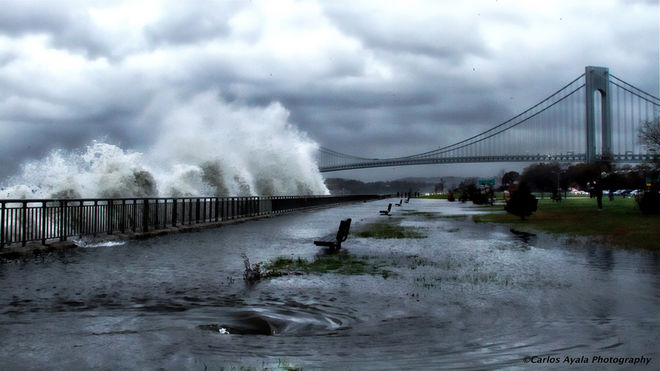New York City just hosted Climate Week NYC 2016 to coincide with the United Nations General Assembly September 19 – 25. City governments, business leaders, NGOs and government representatives convened to discuss issues from sustainable land use in agriculture to strategies to reduce urban vulnerability. As records continue to be set for global temperatures and extreme events, organizers and participants directed significant attention to the need to better understand risks arising from global change and take action to save lives and protect assets.
While annually shining a light on this global crisis, New York City faces its own daunting perils. Sea level rise poses an almost existential threat to the city—a few weeks before Climate Week, New York Magazine released “This is New York in the not-so-distant future,” one of the most thorough pieces on the challenges threatening the city this century. As today’s hundred-year floods may become five times more likely in the next few decades, significant destruction of coastal properties, infrastructure and business activity will become an every-decade or once-in-a-generation occurrence. And, the re insurer Swiss Re has already predicted that its “anticipated annual losses in New York will more than double by 2050, to $4.4 billion, and the cost of black-swan events that happen on average around once every 70 years will more than quadruple, to $90 billion.”
This has significant implications for real-estate, business investment and the future economic growth of the city.
For all cities, not just New York, careful cost-benefit-analyses must now be made factoring in climate risks, particularly for long-term investments. Will a 50-year lifespan project be investment-worthy if it will be rendered unusable from flooding in 40 years or should developers ignore climate risks if it can make a return in a shorter term, say 10-20 years? Or, should a project or building design be altered and enhanced to withstand change? For individuals and businesses, they must decide if buying a property along the coast or flood-prone area will be responsible and safe decisions.
Beyond the very long-term, understanding how risks are changing, even if small, in the next few years can help decision-makers better prepare for disruption and catastrophes with the resources and assets already in place.
Adapt Ready’s analytics give better perspective to these tough decisions by providing risk information over multiple time frames, useful for short- and long-term decision making for a variety of stakeholders. While New York’s fate is of major significance to the world, other cities and communities face similar or worse risks. In the spirit of Climate Week, it is important to shine a spotlight on many other cities’ risks—with our global coverage, Adapt Ready technology can enhance decision-makers’ ability to manage risk at any location.



